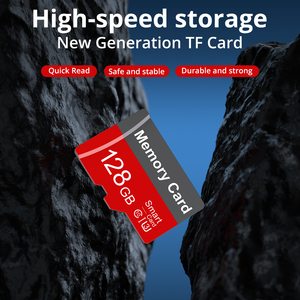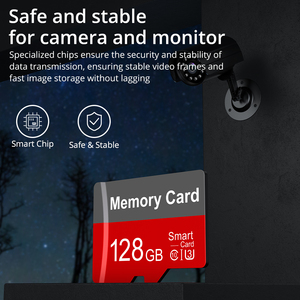
All categories
Featured selections
Trade Assurance
Buyer Central
Help Center
Get the app
Become a supplier

(42221 products available)




















































The type of mobile RAM depends on the generation and standard. The RAM is used in cell phones to perform multiple tasks and allow them to function. It is an integrated circuit that stores data and machine code currently being used by a device. The data is stored so that the central processing unit (CPU) can access it quickly, which speeds up the phone's operation. There are two primary types of RAM used in mobile phones: dynamic RAM (DRAM) and LPDDR SDRAM. DRAM is the traditional RAM used in computer systems, and LPDDR SDRAM is a form of DRAM that is currently used. Mobile phones have a limited amount of RAM compared to a desktop computer. Most phones have between 2GB and 12GB of memory. However, some models have 16GB or 18GB. The more memory a phone has, the more tasks it can perform simultaneously.
Mobile RAM is built on a dynamic RAM structure, which is a memory chip that is made up of capacitors and transistors. The capacitors are used to store data in the form of electric charges, and the transistors are used to access the data. It is called dynamic because the capacitors must be refreshed with electric current to store data; otherwise, the data will be lost. This is a different kind of memory than the hard drive, which uses flash memory to store data and is not volatile. When a phone is turned off, the data stored in the RAM is lost, so the operating system needs to be reloaded upon startup. RAM is faster than the hard drive and is necessary for the computer to function. It is a type of short-term memory used for processing and is different from the long-term memory used for data storage.
RAM (random access memory) for mobile phones is a crucial component that plays a significant role in the phone's overall performance. The following are some of the features and functions of mobile phone RAM;
The primary function of RAM is to store data temporarily so that the CPU can access it quickly. This allows the phone to run multiple applications simultaneously. RAM stores data for active applications, which the processor can access instantly. RAM allows the phone to multitask and run various applications simultaneously, which would not be possible with only the phone's internal storage.
The speed of RAM for phones is measured in megahertz (MHz) or gigahertz (GHz). Higher RAM speeds allow the processor to access data quickly, which makes the phone perform better. More RAM also makes the phone run faster because it can store more data at once, so the processor doesn't have to wait as long to access it.
The RAM of a mobile phone is one of the primary factors that determine the device's overall performance. A phone with more RAM can run more applications simultaneously without slowing down or crashing. It can also load large files and run demanding applications quickly and smoothly. Thus, users with heavy workloads should opt for a phone with higher RAM capacity to ensure optimal performance.
Ram allows the phone to multitask, which means it can run more than one application at the same time. For instance, a person could be browsing the internet while also sending a text message or checking their email. The phone can do more than one thing at once because of RAM. However, if a phone does not have enough RAM, it will not be able to do as much at once. Each application will run more slowly, and the phone might also run out of memory. Because of this, having enough RAM is vital for multitasking.
Ram helps control how much power a phone uses. This is because it allows the processor to work efficiently so that the phone only uses the power it needs at any given time. RAM is an essential component for mobile devices. It allows them to store and access data quickly, which is crucial for their performance. As a result, the amount of RAM a phone has will significantly impact how well it can multitask, how fast it can run, and how much power it uses. Users should consider the amount of RAM when choosing a phone to ensure it meets their needs.
Mobile RAM is a significant component of a computer or smartphone. It is important to know about the different mobile RAM usage scenarios.
For a smartphone, a higher RAM capacity enables faster performance when running demanding tasks or multitasking. With more significant RAM, a phone with a good camera can easily take photos and perform in-app editing without lagging. The photos will also be processed and saved faster. Additionally, gaming on a smartphone is more fun if it has a higher RAM capacity. Gamers can play demanding games without the phone overheating or experiencing lag. They can also access gaming communities and stream games effortlessly.
Mobile RAM also allows for smoother multitasking. Phones with higher RAM can run multiple apps simultaneously without closing any of them. Also, switching from one app to another is seamless. For instance, a student can have different educational apps open and switch between them to access various information. An individual can also chat on social media and listen to music without their phone hanging.
Higher mobile RAM capacity is also useful for content creation and productivity. Tasks like video editing and document creation are faster, while large files are handled easily. For instance, a videographer can edit high-resolution videos without the phone lagging. They can also use cloud storage to store the files.
Phones with higher mobile RAM are also future-proof. Software updates and new apps will not slow them down. Such phones have a longer lifespan.
For computers, mobile RAM is essential for gaming, especially when the computer has a dedicated graphics card. A higher RAM capacity allows the computer to run demanding games seamlessly. Gamers can also use online gaming platforms and stream games without lag. Mobile RAM also improves productivity on a computer. For instance, a graphic designer can work on high-resolution projects without the computer hanging. Editing photos and videos is also faster. Gaming communities offer various items that people can buy in bulk. For instance, one can buy a mobile RAM in bulk for gaming. They can also buy controllers, chargers, and headsets in bulk. Selling such items can be profitable, especially if the business targets gamers.
Phones with more significant RAM can also run demanding programs easily. For instance, a phone with a higher mobile RAM capacity can use a mobile office suite to perform office tasks in the absence of a computer. It can also handle web development tasks. A web developer can use the phone to develop websites, test and debug code, and deploy sites. The tasks will be faster and less challenging.
Phones with higher RAM capacity also offer a better user interface. For instance, animations are smoother, and transitions are faster. The phone also responds faster to touch and button presses. Mobile RAM also makes a phone's fingerprint reader faster. It takes less time to unlock the phone.
When choosing the right RAM for a mobile phone, there are several factors to consider to ensure that it meets one's needs. These factors are highlighted below:
It is important to ensure that the RAM selected is compatible with the mobile phone. In most cases, a simple Google search can reveal the type of RAM that is compatible with a particular phone model.
The capacity of RAM is an important consideration. The higher the RAM capacity, the more applications can be run and the more data can be processed and accessed at the same time. So, if the goal is to enhance the device's performance, then a higher capacity option should be considered.
It is important to buy mobile RAM from a reliable manufacturer. This is because the manufacturer's reputation and adherence to quality control standards can have a significant impact on the performance and reliability of the RAM.
It is better to purchase a new RAM than a used one. This is because new RAM is less likely to have manufacturing defects or physical damage that could impact its performance and reliability. On the other hand, used RAM may have been subjected to wear and tear during previous usage.
When selecting mobile RAM, it is important to consider the features that it offers. For instance, look for RAM with multiple features, such as heat spreaders, which help to dissipate heat and keep the RAM cool during operation. Also, consider RAM that offers overclocking and RGB lighting features, among others.
When buying mobile RAM, it is important to have a budget in mind. This will help to narrow down options and make a decision that is financially wise. However, it is important to understand that the cost of the RAM may not be synonymous with quality.
Before selecting RAM for a mobile phone, it is important to read reviews and ratings. This will provide insights into the experiences of other users with the product. In most cases, user reviews are more trustworthy than the information provided by the manufacturer. Reviews will provide insights into the RAM's performance, compatibility, and durability.
Q1: What is the ideal RAM for a mobile phone?
A1: The best RAM size for a phone depends on the user's needs and budget. For average users, a 6GB or 8GB RAM phone offers a good balance between performance and cost. Gamers and heavy multitaskers may prefer phones with 12GB or 16GB of RAM for smoother performance.
Q2: How does RAM affect a phone?
A2: A phone's RAM affects its performance and multitasking capabilities. More RAM allows the device to run more apps simultaneously and switch between them without lag. It makes everything run smoother and faster, from opening apps to gaming and multitasking.
Q3: Is 12 GB RAM enough for a phone?
A3: 12GB or higher RAM is sufficient for any amount of multitasking or gaming. The amount of RAM is overkill, but it's what is needed for heavier workloads. The difference in performance is minimal, so users would not benefit from purchasing a device with more RAM.
Q4: Is higher RAM better?
A4: The higher the RAM, the better the performance of the phone. With higher RAM, the phone can store more data for a longer time, which will result in a faster and smoother functioning of the device. It will also allow multiple applications to run simultaneously without any lag.
Q5: Is 2GB RAM enough for a phone?
A5: 2GB RAM is more than enough for a phone. An average user does not need more than 2GB RAM to perform daily tasks. The RAM size is enough to ensure that the phone multitasks without any lag. This means that the phone can function well, even if one is running multiple applications at the same time.